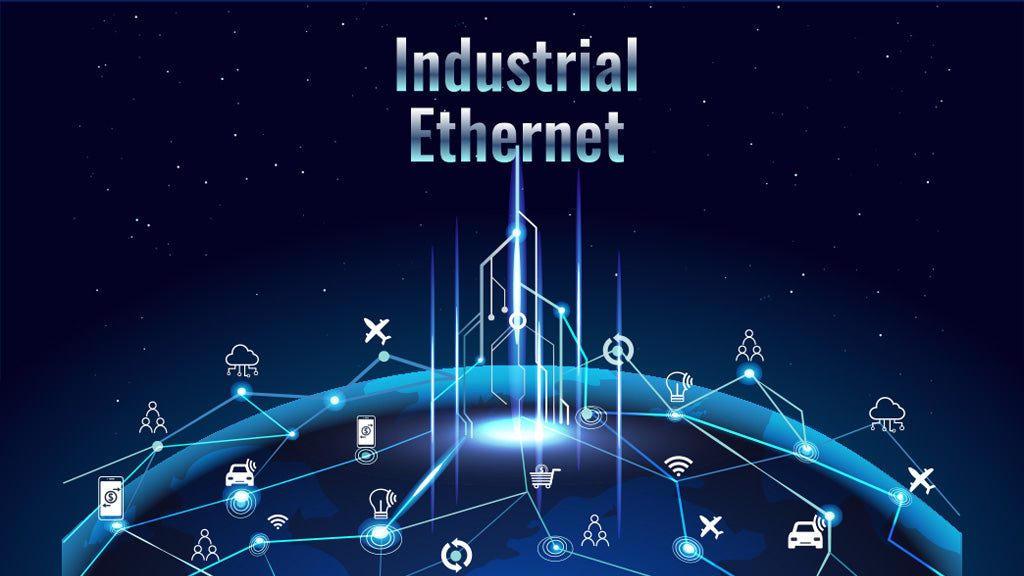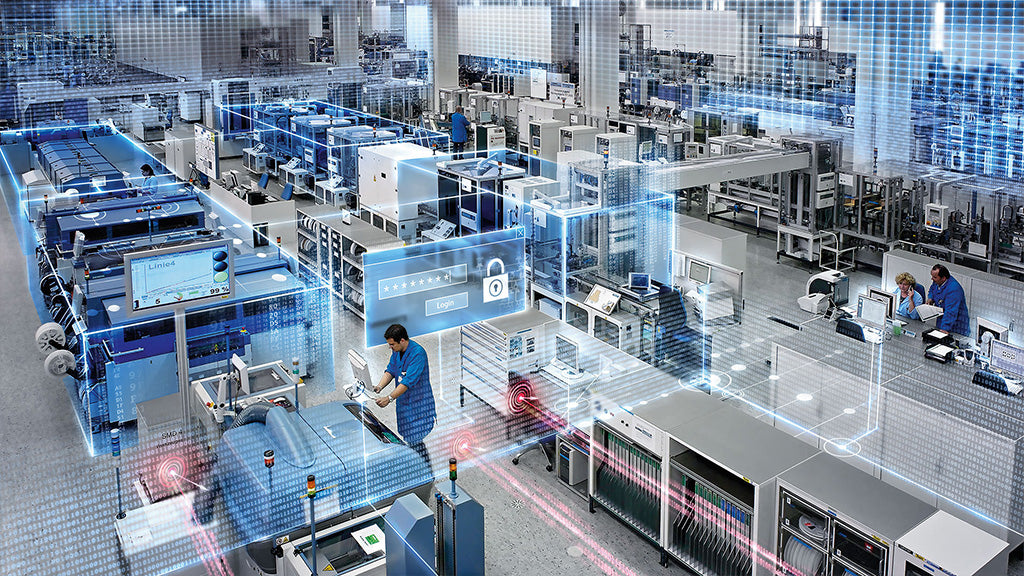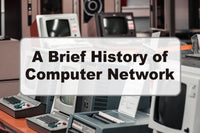Ethernet is very common in our home and office environments. Modern people rely on Ethernet protocol to get fast data transmission so they can enjoy surfing the Internet. But have you ever heard about industrial Ethernet? It has become the trend for the factory floor. This blog delves into industrial Ethernet and the differences between industrial and commercial Ethernet.
What is Ethernet?
Ethernet was first proposed in the 1970s and later standardized as IEEE 802.3 in 1983. (IEEE is the abbreviation of the Institute of Electrical and Electronics Engineers, which defines the physical and data layer of the Ethernet.) Ethernet is a networking technology that allows computers to connect with each other in a local area network (LAN) or wide area network (WAN).
Ethernet is essential to allow for various network-connected devices to communicate with each other. For example, if many people talk to each other at the same time, they cannot hear clearly what others said. And that’s the same thing for a network. Data packets can be in a mess if the signal is sent at the same time over a shared fiber optic cable or Ethernet cable. Ethernet regulates the rule for data transmission to solve packet collisions.
What is Industrial Ethernet?
Industrial Ethernet has become the leading network connection technology on factory floors worldwide. This further development of Ethernet caters specifically to factory requirements. As the name implies, industrial Ethernet is used in automation and control systems in industrial manufacturing.

Real-time, low latency, and determinism should be ensured for the routing, control, sensor level in industrial environments. To meet the need of the industrial environment, industrial Ethernet uses special protocols designed to thrive in industrial settings. There are approximately 20 protocols for industrial Ethernet, and we’ll explore six common protocols here.
5 Common Industrial Ethernet Protocols
EtherCAT
EtherCAT, stands for Ethernet for control automation technology, was introduced by Beckhoff in 2003. EtherCAT is based on MAC protocol, and it uses a master and slave mode for real-time data transmission in the automation system. The prominent feature of EtherCAT is “on-the-fly processing,” as each node (slave device) identifies relevant information from the packet and sends the data simultaneously to save time and improve efficiency.
EtherNet/IP
EtherNet/IP is an industrial Ethernet protocol supported by the Open Device Vendors Association (ODVA) and adopted by Rockwell Automation. It is totally based on the Ethernet protocol, including a standard Ethernet physical layer, data link, network and transmission layer and CIP (CIP provides universal services for industrial automation systems.) EtherNet/IP uses standard Ethernet and switches so that it can support unlimited nodes. Though it is compatible with multiple Ethernet protocols, EtherNet/IP has a limited function of real-time communication.
PROFINET
PROFINET, introduced in the early 2000s, is one of the most common industrial Ethernet solutions. It was developed by Siemens together with members of Profibus. PROFINET has three classes: CC-A, CC-B, and CC-C. CC-A is the basic standard to support real-time and acyclic real time. The typical application of the CC-A standard is a business automation system. CC-B is added with simple network management protocol (SNMP) support and is often used for processing automation systems. CC-C, also known as PROFINET IRT, has a real-time data change and reduces the cycle time to lower than 1 ms, which is suitable for motion control applications.
Modbus TCP/IP
Modbus TCP/IP is an evolution of Modbus RTU fieldbus created in the 1970s. It combines the physical network Ethernet, networking standard TCP/IP, and a method of data transmission Modbus. Modbus TCP/IP uses a master-slave (client-server) communication system. Only one device is the master, and the peripheral devices can be the slaves. Slaves request a query, and the master handle the query, so the slaves cannot transmit data without the permission of the master. It should be noted that Modbus TCP/IP is not a real-time protocol.
POWERLINK
Developed by B&R, POWERLINK is a real-time industrial Ethernet protocol in accordance with the IEEE 802.3 Ethernet standard, so it has a free choice of network topology, hot plug, and cross connection. It adopts the polling and timeslot to allow a single node to send data at a time. The POWERLINK protocol can support various parts of industrial automation.
Industrial vs Commercial Ethernet
You may be familiar with commercial Ethernet as it is common for home or office networks, but industrial Ethernet is slightly different. There are some crucial differences between industrial and commercial Ethernet, and we’ll further explore them in the following content.
- Standards and Protocols: The main communication protocol used for commercial Ethernet is IEEE 802.3, which defines the rule for data transmission in Ethernet. However, industrial Ethernet should use protocols specially designed for industrial use, like EtherNet/IP and EtherCAT.
- Network Speed: You may pursue a high-speed network for a better Internet experience, but do you know what network speed is needed in industrial environments? Actually, the speed for industrial Ethernet is much lower than that in LAN as the network is only required for sending control and automation data.
- Stability, Reliability, and Security: The common Ethernet cannot perform well under harsh environments, but industrial Ethernet is designed to withstand dust, chemicals, vibration, extremely high or low temperatures, and electromagnetic interference. So, industrial cables, switches, and routers can be different from those used in commercial Ethernet. For example, industrial cables often feature a robust cable jacket and larger gauge than standard cables for better performance in extreme environments.
- Real-time Communication: In general, commercial Ethernet cannot ensure real-time data delivery, but real-time communication is essential for industrial environments such as automation and control systems. The data should be transmitted in a precise time interval for real-time control.
Conclusion
Industrial Ethernet can be applied in factory automation, process and control systems, robotics, transportation, oil and gas industry, etc. Industrial Ethernet is compatible with Industry 4.0 for good connectivity and data transmission in automation. It can still grow fast in the future.

For more information on this topic, you can keep up on our blogs. While VCELINK offers general and basic information for our customers and other visitors to the website, it’s not professional advice.



Be the first one to comment.
Leave a comment